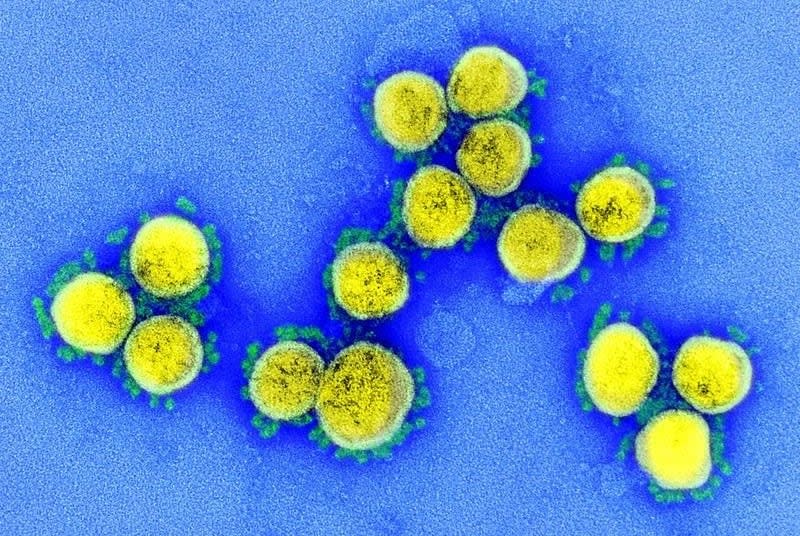 Key indicators are forecasting Canadians may be on the brink of entering a fall COVID-19 wave.
Key indicators are forecasting Canadians may be on the brink of entering a fall COVID-19 wave.
The past month has seen an increase in positive test cases, a rise in COVID-19 hospitalizations and rising virus levels in wastewater across the country.
The highly mutated new variant BA.2.86 was also detected in Canada for the first time on Tuesday.
Ottawa’s medical officer of health Vera Etches said current higher COVID-19 levels are expected to continue to rise in the coming weeks.
These early warning signs have some wondering whether COVID-19 is making a comeback, and if it is, how bad it will be.
CBC Ottawa spoke with public health experts to get some answers.
What is causing this rise in cases?
Health experts attribute the recent rise in infections to the spread of Omicron subvariant EG.5, which has been circulating in Canada since at least May, according to the Public Health Agency of Canada.
“Right now it accounts for about 60 per cent of the current positives we’re seeing so that’s what’s driving this late summer wave,” said Dr. Gerald Evans, chair of the division of infectious diseases at Queen’s University in Kingston, Ont.
“A lot of people haven’t had a booster for about 12 months and have lost a fair degree of the immunity that might have protected them from getting infected.”
Most of us who’ve been watching carefully expected there to be a rise. – Dr. Fahad Razak
Ottawa’s medical officer of health Vera Etches said Thursday it’s not yet clear that subvariants are driving the increase.
“It’s more that we’re in close contact with each other,” she said.
Dr. Fahad Razak, former scientific director of Ontario’s COVID-19 Science Advisory Table, explained COVID-19 infections have yet to settle into a seasonal pattern like we now expect from RSV and influenza. He said this summer’s rise echoes rises that have occurred in earlier years of the pandemic.
“Most of us who’ve been watching carefully expected there to be a rise,” Razak said. “We know that as the virus continues to evolve and mutate there will be these periodic rises that occur.”
Subvariant EG.5 is just one of several variants in Ottawa’s wastewater right now, according to Tyson Graber, co-lead investigator of the wastewater monitoring project in Ottawa.
Graber has seen a gradual increase in most of these variants in the wastewater over the past four weeks but EG.5 is outpacing the other variants.
“That’s indicative of a COVID-19 wave happening in the city and unsurprisingly that is followed by an increase in hospitalizations that we’re seeing now in Ottawa,” Graber said.
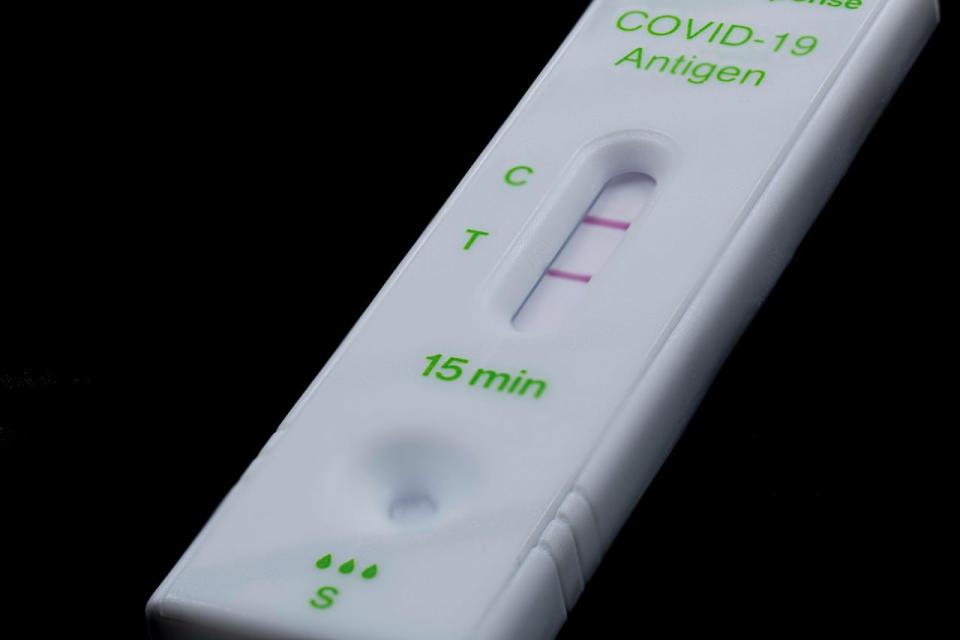 Ottawa Public Health says 177 new COVID-19 cases were reported the week of Aug. 22. (CBC)
Ottawa Public Health says 177 new COVID-19 cases were reported the week of Aug. 22. (CBC)
What do we know about new variant BA.2.86?
The first Canadian case of a new COVID-19 variant known as BA.2.86 appeared in British Columbia on Aug. 29.
This variant has only been identified in a few countries around the world, but its high number of mutations still has health experts concerned.
“This virus has 30 mutations or changes to [its] spike protein, which is the part the antibodies try to grab to take out the virus,” explained Dr. Peter Lin, director of primary care initiatives at the Canadian Heart Research Centre in Toronto.
“So the antibodies we made from the vaccine or previous infections may not be able to grab the spike protein as easily, which means the virus could slip past our defences.”
Everybody is sounding the alarm bells again. – Dr. Peter Lin
Omicron was the last variant that appeared with this many mutations.
“We’re kind of in the same situation,” Lin said. “Everybody is sounding the alarm bells again.”
Not all are sounding the alarm bells quite yet.
“I haven’t seen evidence yet that it has an ability to out compete the other viruses out there. If it can’t do that, then it’s just going to fizzle out,” Evans said.
Health Canada told CBC News Monday it is considering three new vaccines specifically designed to target the subvariant XBB.1.5, which like EG.5, is also part of the Omicron family.
While it is too early to say whether the new vaccines will be able to target BA.2.86, Lin said there is some hope.
Variant BA.2.86 has not yet been detected in Ottawa’s wastewater, but Graber expects it will show up within the next month.
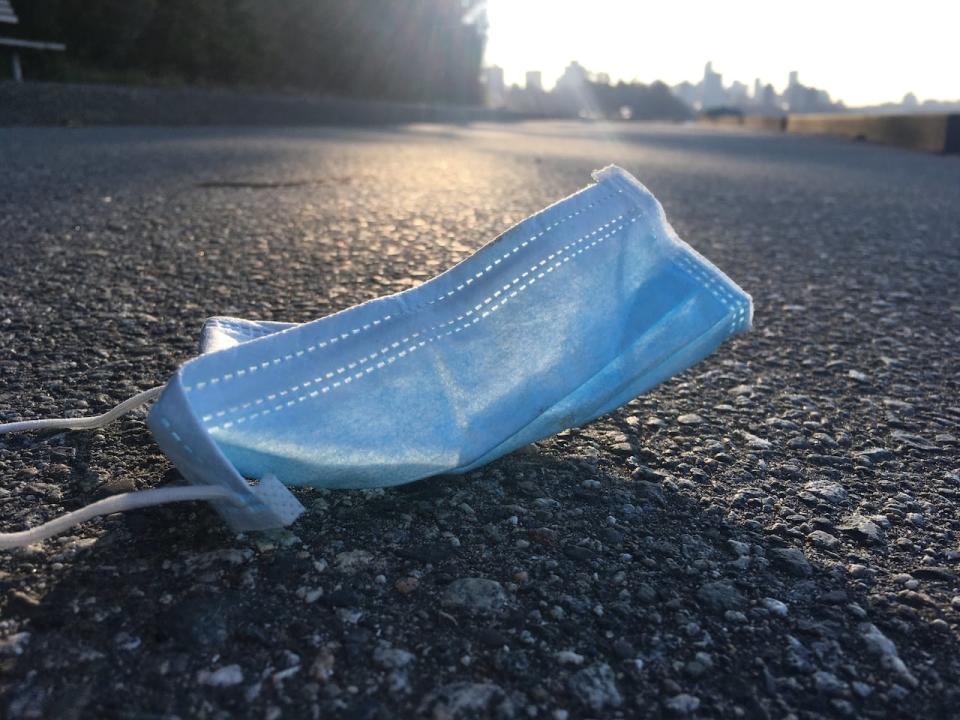 Health experts say masking, staying up to date with vaccinations and staying home when showing symptoms will all be effective in slowing the spike of the wave. (David Horemans/CBC)
Health experts say masking, staying up to date with vaccinations and staying home when showing symptoms will all be effective in slowing the spike of the wave. (David Horemans/CBC)
Are we entering another wave?
There are different opinions on whether the country is entering a new COVID-19 wave, or simply a rise in cases.
Graber said the increase in COVID-19 viruses he is seeing in Ottawa’s wastewater does indicate the beginning of another wave.
Based on the waste water data alone, we probably won’t be done with this wave until at least October or November. – Tyson Graber
“It’s a foregone conclusion that we are now in a late summer, early fall wave, and that this wave will continue for at least the next couple of months,” he said, adding the increase he’s seeing is not as steep as the early days of previous waves have been.
“Based on the waste water data alone, we probably won’t be done with this wave until at least October or November.”
 Researchers measure and share the amount of novel coronavirus in Ottawa’s wastewater. The most recent data is from Aug. 27, 2023. ( (613covid.ca))
Researchers measure and share the amount of novel coronavirus in Ottawa’s wastewater. The most recent data is from Aug. 27, 2023. ( (613covid.ca))
Graber said there are a handful of variables that could change this forecasted trajectory, including the coming return to school, an increase in indoor activities, waning immunity, and new variants coming through the door.
Razak does not expect this wave will cause severe disruptions for most Canadians.
“For most people the chances they’ll get really sick are low,” he said. “This is not the crisis we faced in year one, two, or three of the pandemic, but it can still be disruptive. Preventative steps are prudent.”
For Evans, the current increase in COVID-19 cases does not yet indicate we’re entering another wave.
“The curve ball is BA.2.86,” he said. “If it were to really emerge and have a growth advantage, then all bets are off and we might actually see a subsequent pandemic wave.”
When should I get my next booster?
Most experts are advising to hold off on getting a booster until the new vaccines have arrived, which experts say are expected mid-fall.
“The bivalent available now is not going to work very well so that’s why we should wait for the new one,” Lin said.
“The new vaccines made by Pfizer, Moderna and Novavax are designed to go after XBB spike protein, because that was the main virus for most of the year. EG.5 is the son of XBB, they have a lot of things in common, and so the hope is that it will work on that version.”
Evans said the same.
You need a booster. If everybody just abandons getting boosters going forward there’s a high probability we’ll return to a more susceptible population – Dr. Gerald Evans
“If you’re young and healthy and overdue, just wait until the new boosters come out,” he said.
“But if you’re somebody of substantial risk and you’re due for your booster, you should probably get it now. Even current vaccines will protect you from acute infection for a good month or two.”
Generally healthy people who have kept up to date with their boosters will likely have developed a hybrid immunity. Evans specified this doesn’t mean people who have updated boosters are immune to new variants, but it does mean their infections will be less severe, so they can afford to hold off.
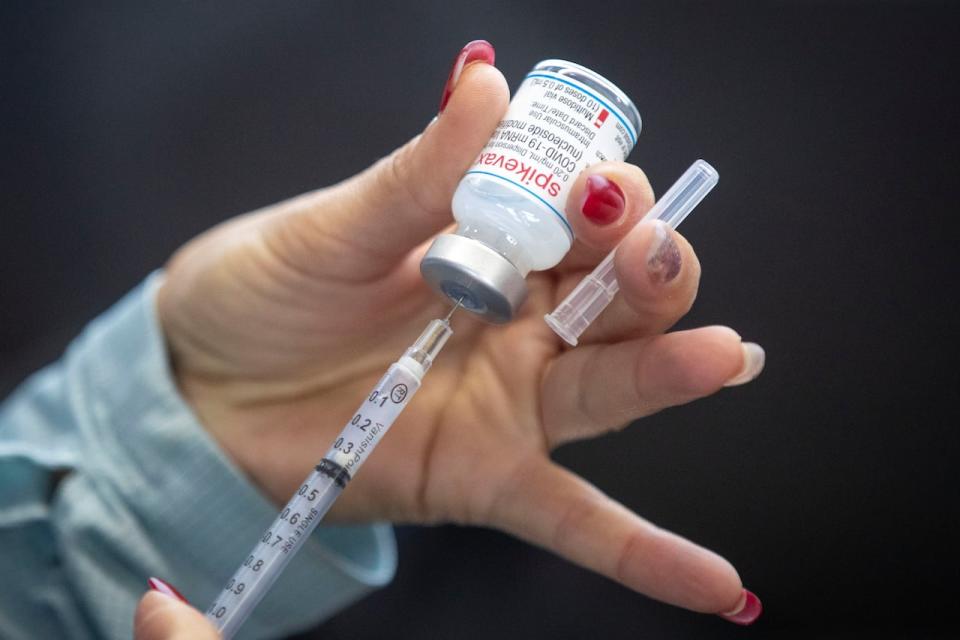 Health Canada is reviewing three applications for new COVID-19 vaccine formulations to address new subvariants in circulation. (Lars Hagberg/Canadian Press)
Health Canada is reviewing three applications for new COVID-19 vaccine formulations to address new subvariants in circulation. (Lars Hagberg/Canadian Press)
Despite this, he said continued vaccination is still important.
“You need a booster. If everybody just abandons getting boosters going forward there’s a high probability we’ll return to a more susceptible population.”
Evans said Health Canada will likely only approve the new vaccines for children 12 and over but that kids between five and 12 years old are able to get the bivalent booster currently available.
What does this mean for back to school?
Health experts expect the return to school will bring an increase in viral spread, as it has in previous years.
“We’ll see the usual pattern of germ swap once kids go back to school,” Lin said. “But this time we have new variants. All of this virus swapping will happen before new vaccines are available.”
But this could come with some advantages, Evans said, explaining the return to school will also cause an immediate rise in the common cold, which can offer a small amount of protection against COVID-19 infections.
Evans said getting children boosted before going back to class would help to reduce the spread, and advised parents to keep kids home if they’re showing any symptoms.
“It is important as children come together in schools to do that check every day [for respiratory symptoms], and stay home when you’re sick,” Etches said.
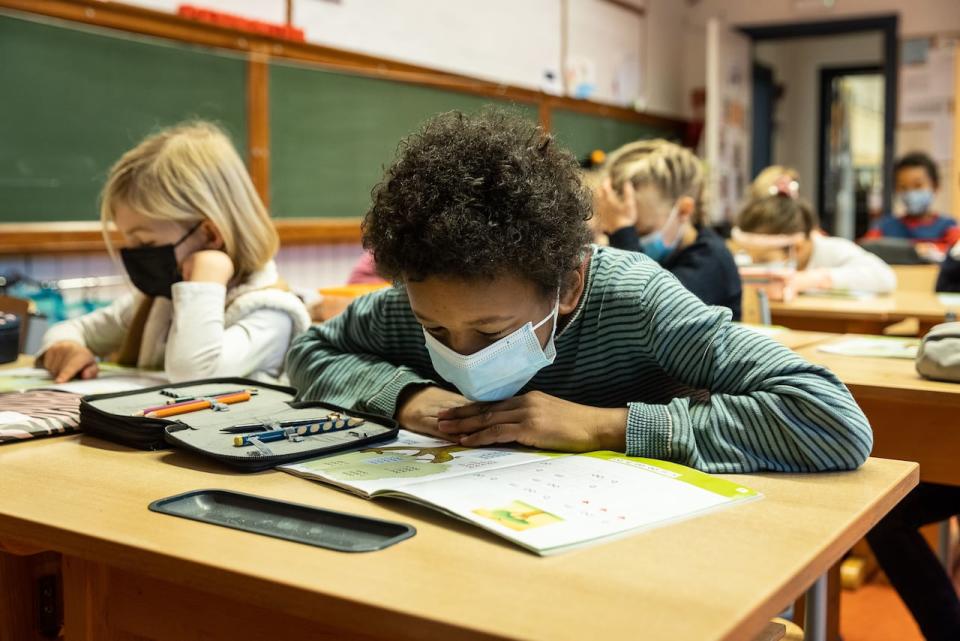
Experts anticipate the back-to-school season will mean increased circulation of RSV, influenza and COVID-19. (James Arthur Gekiere/Belga Mag/AFP/Getty Images)
Any chance of mask mandates or lockdowns?
Health experts consulted for this piece agreed that a fall COVID-19 wave would be unlikely to induce mask mandates or lockdowns.
“I don’t think there’s anything that we’re seeing right now that would suggest we should go into lockdown or anything like we’ve seen in the past, in terms of early pandemic public health measures.,” Graber said.
Razak agreed.
“Unless there is significant change in the nature of the virus, I think it’s very unlikely a mask mandate will be something any government in North America or Europe considers,” he said. “A mask mandate at this point would do more harm than good.”
Razak did distinguish between general mask mandates and those for higher risk environments like hospitals, adding that the latter is something he hopes provinces will consider.
As it is, Razak said he expects mask use to be very low this winter.
“There is a sense that the pandemic has passed,” Razak said. “This is going to be a very difficult challenge for public health leadership to get people to get vaccinated.”
All health experts consulted assured masking and vaccination continue to be the best ways to reduce the spread of the virus.
“Regardless of the variant, there are things we can do to decrease spread of respiratory illness,” Etches said.
“Wearing a mask as we get back to work or school is one thing we can do to help decrease transmission, keeping our hands clean, not touching our face with unclean hands, these are things to remind ourselves to practice again as we head into the fall.”
*****
Credit belongs to : ca.news.yahoo.com
 Atin Ito First Filipino Community Newspaper in Ontario
Atin Ito First Filipino Community Newspaper in Ontario






